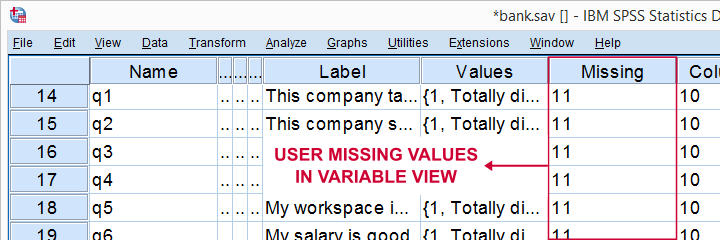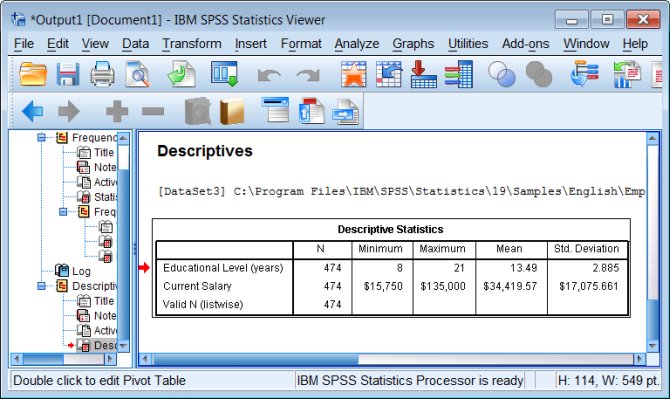

It will create a file in your current session to which we will turn very shortly. It is important to note that this will NOT create a file in your directory with that name. The important thing to notice here is the section called "Location of Imputed Data." I have taken the default and specified that the new dataset will be named SPSSImputations. So I include it here, even though I drop it later. That measures would presumably be nicely correlated with DeptP, and would be useful in imputing missing data for that variable. For example, suppose that I had a second measure of depression, but chose not to use in in the final analysis. I do this because those extra variables may be able to add importantly to the imputed values.

Notice that I have included all nine variables in doing the imputations, even though I will only use six of them in the regressions. When you have made the necessary assignments of variables to the role you will have a menu that looks like the following. Then from the Analyze menu choose Multiple Imputation and then select Impute Missing Values. We read in the data as we normally do in SPSS, in my case as a "dat" file. SexPĝeptPĚnxtP GSItPĝeptSĚnxtS GSItS SexChild Totbpt Notice that variable names are included in the first line. I no longer recall whether the missing values were actually missing or whether I deleted a bunch of values to create an example. We will assume that we want to predict the child's Total Behavior Problem T score as a function of several other variables. I just needed a bunch of data and I grabbed an available file related to a research project with which I was involved. These are a subset of a larger dataset, and the analysis itself has no particular meaning. The variable names are, in order, SexP (sex parent), DeptP (parent's depression T score), AnxtP (parent's anxiety T score), GSItP (parent's global symptom index T score), DeptS, AnxtS, GSItS (same variables for spouse), SexChild, Totbpt (total behavior problem T score for child). The other variables relate to the spouse of the patient. Several of the variables in this example relate to the parent (patient) with cancer. The "Head" tells me that the names of the variables are to be found in Line 1. 9) as the missing data entry for each variable. (You could also use 999, 99, or whatever set of values you want.) Once the data are read in, you go to the Variable View and enter the missing value (e.g. (The "-9" in the title of the file is there to remind me that this file used "-9" for missing data, which is a common notation for missing data in SPSS. The data file is named CancerHead-9.dat and contains the following variables related to child behavior problems among kids who have a parent with cancer. However I will also provide the script that results from what I do. Because SPSS works primarily through a GUI, it is easiest to present it that way. SPSS will do missing data imputation and analysis, but, at least for me, it takes some getting used to.


 0 kommentar(er)
0 kommentar(er)
